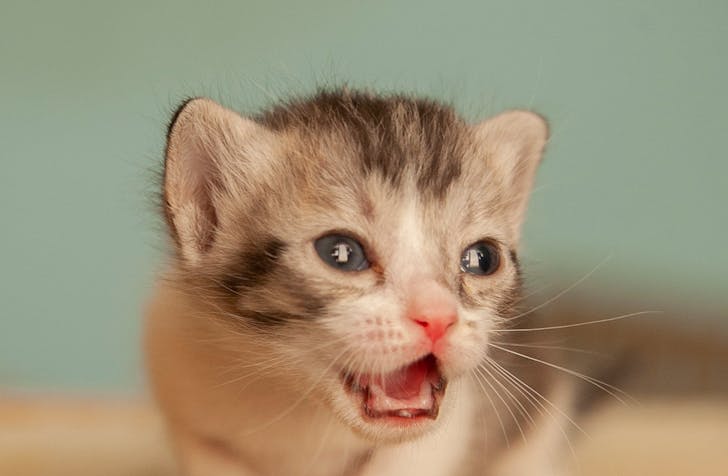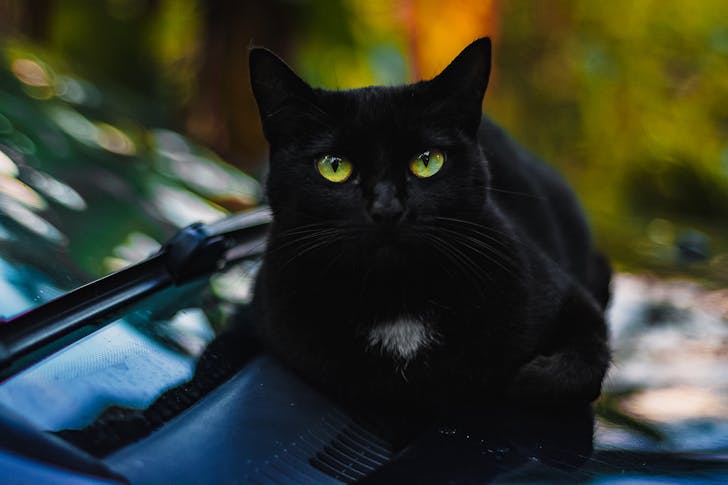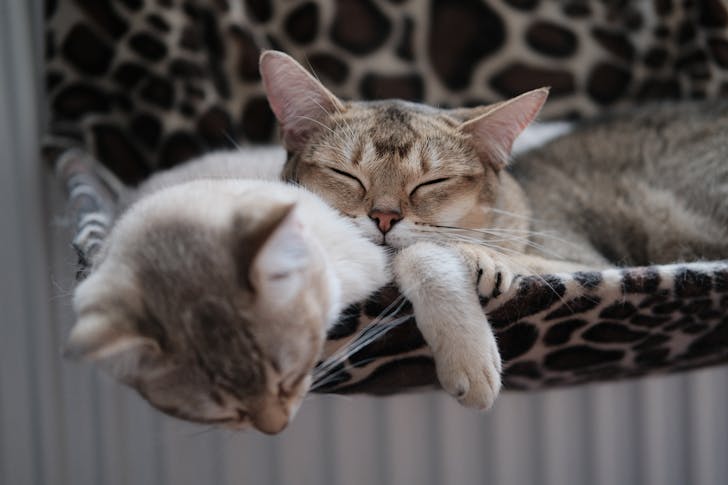Cats, those enigmatic creatures that pad softly into our lives and hearts, hold a treasure trove of peculiarities beneath their sleek fur and piercing gazes. Their world is one of silent whispers and shadowy leaps, a realm where the ordinary meets the extraordinary. Here are 20 strange cat facts, each shedding light on the myriad ways these feline companions astonish and delight.
1. Kittens Have 26 Baby Teeth
Kittens start their lives with 26 deciduous teeth, which they begin to lose as they mature, making way for 30 permanent teeth. This dental evolution emphasizes the need for proper dental care throughout a cat’s life to prevent disease and ensure overall health. Regular check-ups and cleanings are vital to maintain those pearly whites.

2. Cats Share 95.6% of Their DNA with Tigers
Cats and tigers share an astonishing 95.6% of their genetic material, linking our domestic companions to their wild ancestors. This genetic connection is evident in shared behaviors such as scent marking, prey stalking, and the instinctual pounce, reminding us of their primal roots.
3. Cats Can Jump 5 Times Their Height
A cat’s ability to leap up to five times its height is a testament to its remarkable physical capabilities. This agility is made possible by powerful muscles and a flexible spine, which puts human jumping abilities into humble perspective.
4. Cats Outrun Usain Bolt Over Short Distances
Over short distances, cats can reach speeds up to 30 mph, outpacing even Usain Bolt. This incredible speed, useful for hunting and evasion, showcases their athletic prowess and evolutionary adaptations for survival.
5. The Rear-End Greeting: A Sign of Trust
When a cat presents its rear to you, it’s not a sign of rudeness but an expression of trust and comfort. This behavior indicates that your cat feels safe and secure in your presence, a true compliment in the feline world.
6. Paw Preference in Cats
Research has shown that cats prefer using one paw over another, often linked to gender. Male cats tend to favor their left paw, while females are likelier to use their right, highlighting intriguing aspects of their neurology.
7. The Mystery of 18 Toes and Polydactylism
While most cats have 18 toes, some are born with extra toes due to polydactylism. This genetic variation is harmless and adds to the charm of those cats blessed with more to love.
8. Creme Puff: The Oldest Cat Ever
Creme Puff made history by living to 38 years and 3 days old, a record for feline longevity. From 1967 to 2005 in Texas, her story underscores the potential for cats to live significantly longer lives under the right care.
9. 32 Muscles in Each Ear
A cat’s ear is a complex system with 32 muscles, allowing for precise control over direction and angle. This sophisticated design enables cats to detect even the slightest sounds, illustrating the marvel of their sensory capabilities.
10. Superior Night Vision and Nearsightedness
Cats possess superior night vision, enabling them to see in low light conditions, although nearsighted during the day. This evolutionary trade-off reflects their nocturnal nature and hunting requirements, balancing their sensory strengths and weaknesses.
11. Whiskers: A Cat’s Radar
Whiskers serve as a cat’s radar, providing essential sensory information. These tactile hairs are deeply connected to their nervous system, aiding in navigation and spatial awareness, a critical aspect of their interaction with the world.
12. Whiskers on Their Legs Too
In addition to facial whiskers, cats also have whiskers on their front legs. These lesser-known sensory tools help them assess their prey and navigate their environment, enhancing their tactile sensing capabilities.
13. Blackie: The World’s Wealthiest Cat
Blackie became the world’s wealthiest cat after inheriting £7 million from his owner. This extraordinary legacy highlights the deep bonds some people form with their pets, ensuring their care and comfort long after they’re gone.

14. The First Pet Cat Dated Back 9,500 Years
The history of domestic cats dates back 9,500 years, with the first known pet cat unearthed in Cyprus. This discovery begins a long-standing relationship between humans and cats, highlighting the depth of their companionship.
15. Early Pregnancy in Female Cats
Female cats can become pregnant as early as 4 to 6 months, underlining the importance of spaying and neutering. Addressing their reproductive capabilities is vital for controlling the cat population and ensuring the health and well-being of feline communities.
16. Abraham Lincoln’s Love for Cats
Abraham Lincoln’s fondness for cats during his presidency illustrates the timeless appeal of these companions. His enjoyment and care for them add a personal dimension to his historical legacy, showing a softer side to the celebrated leader.
17. A Kindle of Kittens
The term “kindle” refers to a group of kittens, a less commonly known but equally delightful descriptor. This charming terminology captures the essence of their collective curiosity and playfulness, enriching our feline vocabulary.
18. Cats Sleep for 70% of Their Lives
Cats spend about 70% of their lives sleeping, a habit that underscores their need for rest and recovery. This considerable amount of sleep supports their health and vitality, allowing them to be alert and active when awake.

19. Disneyland’s Feral Cat Population
Disneyland is home to a squad of feral cats that roam the park, contributing to rodent control. This unique arrangement highlights the park’s unexpected inhabitants and their role in maintaining the balance within this enchanted environment.
20. Mourning Practices for Cats in Ancient Egypt
In Ancient Egypt, cats were revered, with families mourning their loss by shaving their eyebrows and sometimes mummifying them. These practices reflect the cultural significance of cats, esteemed as symbols of grace and protection.
Wrapping Up
Each of these facts, from the quirky to the awe-inspiring, paints a fuller picture of the complex and richly textured lives of cats. They remind us that behind every purr, every graceful leap, and each silent stalk lies a world of fascinating biological and historical narratives waiting to be discovered.
